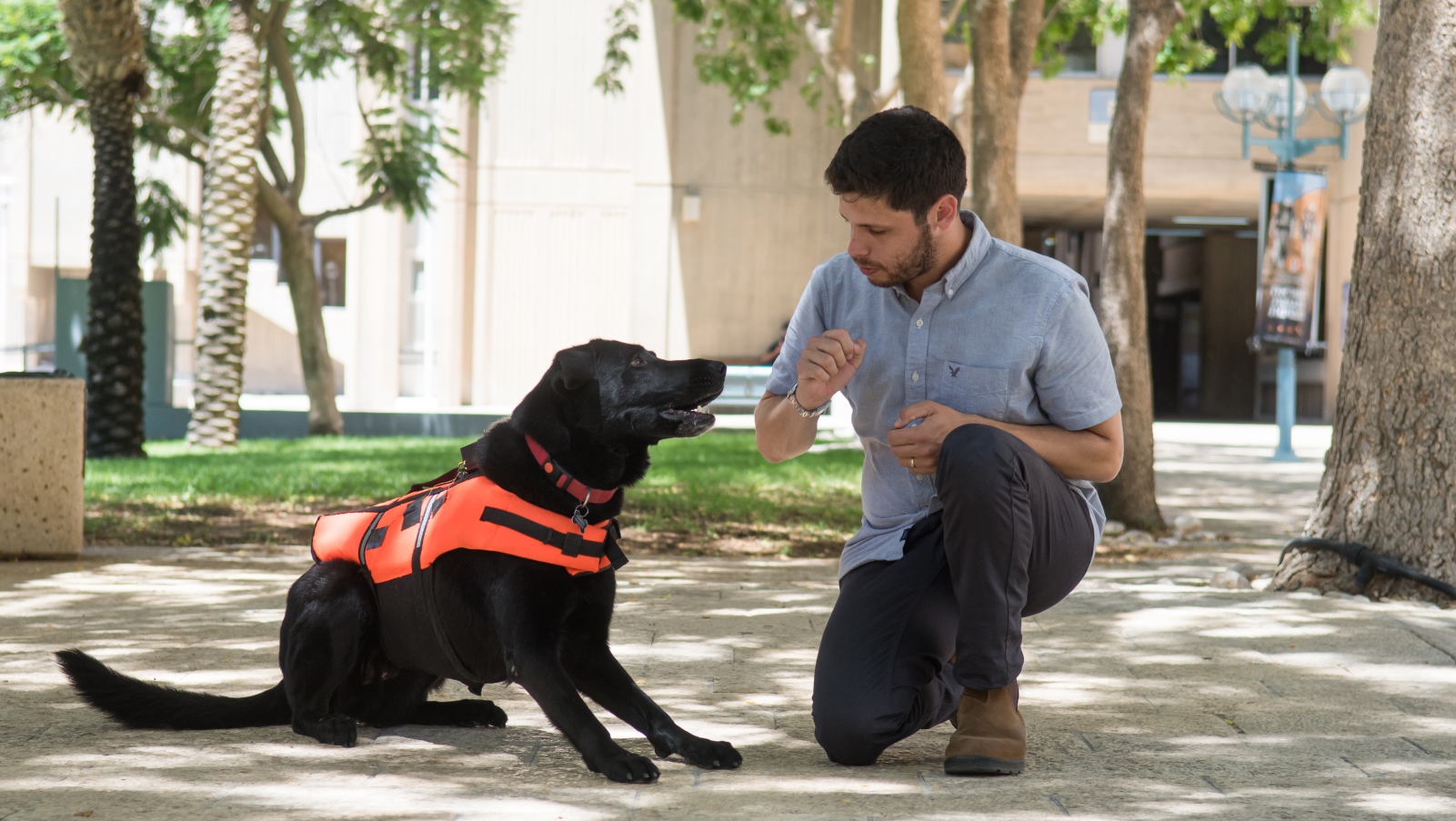Search-and-rescue dogs and service dogs do absolutely amazing work, saving lives and assisting those in need on a daily basis by command. But what if their handlers are unable to deliver verbal commands, either because of their surroundings or disabilities they may have?
Step in the haptic dog vest, which emits painless vibrations that dogs are trained to recognize as various commands. It was developed by an interdisciplinary research team from Ben-Gurion University of the Negev, and is set to be presented at the World Haptics Conference in Tokyo this month.
Haptics technology, which simulates the senses of touch and motion, can be helpful in delivering remote commands to dogs for use in search-and-rescue operations, in assisting disabled handlers and in other service-animal applications.
The commercially available mesh canine vest contains four small vibrating motors positioned over a dog’s back and sides that can be used to train or direct dogs to respond to different, painless vibrations sent via wireless remote control. The handler can elicit different commands by controlling the site and duration of vibrations.
In a demonstration video released by the research team, Tai, a six-year-old Labrador retriever-German shepherd crossbreed, responds to several distinct commands such as “Spin,” “Down,” “To me,” and “Backpedal.”
“Our research results showed that dogs responded to these vibrotactile cues as well or even better than vocal commands,” said Prof. Amir Shapiro, director of BGU’s Robotics Laboratory. “Our current proof-of-concept study shows promising results that open the way toward the use of haptics for human-canine communication.”
Future research is planned to test the haptic vest on dogs of different breeds, ages and training experience, and will integrate more advanced devices into search and rescue, military work dog and service-dog programs.
Fighting for Israel's truth
We cover what makes life in Israel so special — it's people. A non-profit organization, ISRAEL21c's team of journalists are committed to telling stories that humanize Israelis and show their positive impact on our world. You can bring these stories to life by making a donation of $6/month.









